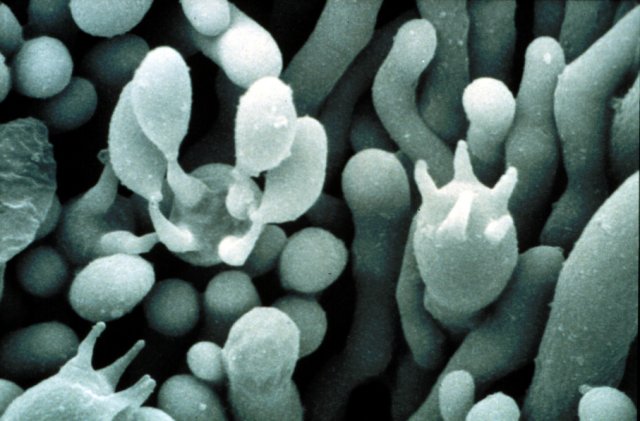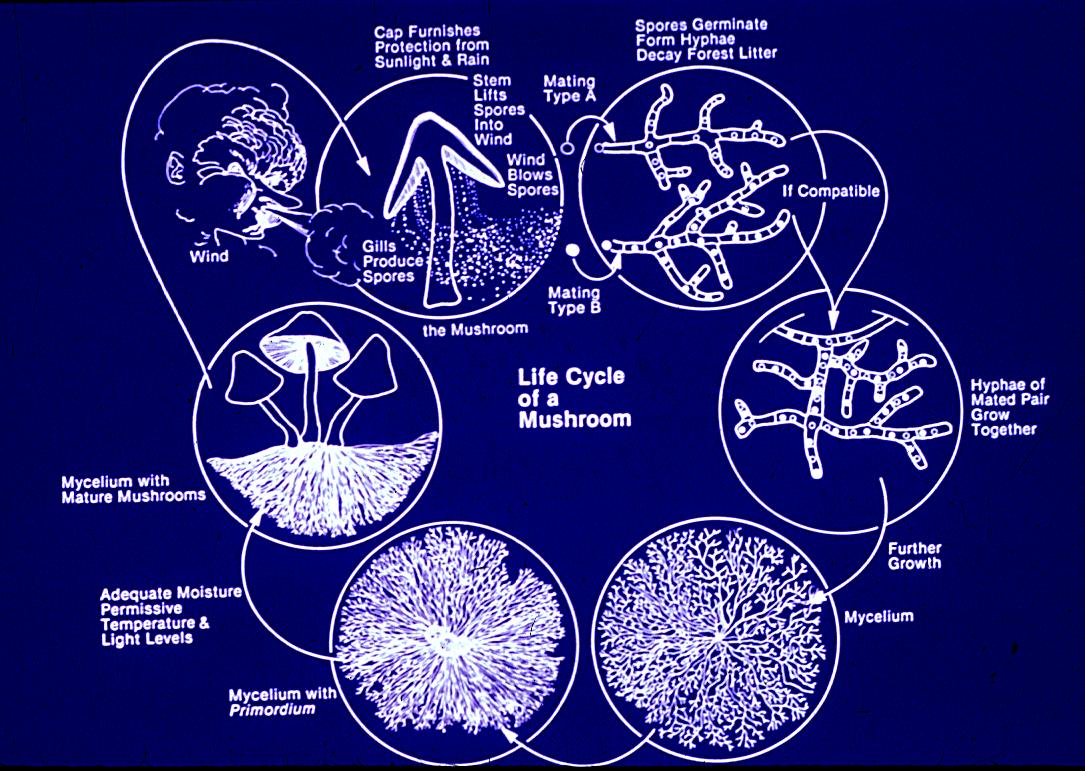Home | Habitat | Adaptations | Nutrition | Interactions | Interesting Facts & About Me | Sources
Reproduction
A Very Special FungiOne distinctive feature that separates Basidiomycetes from other fungi is the production of basidia. The basidium is club- shaped and responsible for spore production. The spores produced are referred to as basidiospores. Basidia are important in that they are the place where both karyogamy and meiosis take place. The basidia form on gills and therefore the mushroom cap itself serves as protection for this important reproductive structure.
A Circle's Round, It Has No End...Once spores are dispersed from the gills and germinate, they form haploid hyphae. Next, the haploid hyphae find a mating pair, undergo plasmogamy, and are then dikaryotic mycelium. When conditions are right, discussed in the habitat section, the fruiting body of Lentinula edodes will form. The basidia are produced on the gills of the mushroom. When the two nuclei fuse together, karyogamy occurs. The nucleus, which is then diploid goes through meiosis. The haploid spores are then in the basidia and can be dispelled by the wind. From there, the life cycle of the Shiitake starts all over again.
|
Here is a close up look at the basidium... a structure that makes the Shiitake and other basidiomycetes so unique. Photo Copyright: Charles Mims
Typical life cycle of the Shiitake mushroom
Image Provided By: Tom Volk |

